7 Things You Didn’t Know about Wildfire
We talked to UA researcher Donald Falk about the ecology and physics of wildfire. What we learned may surprise you.
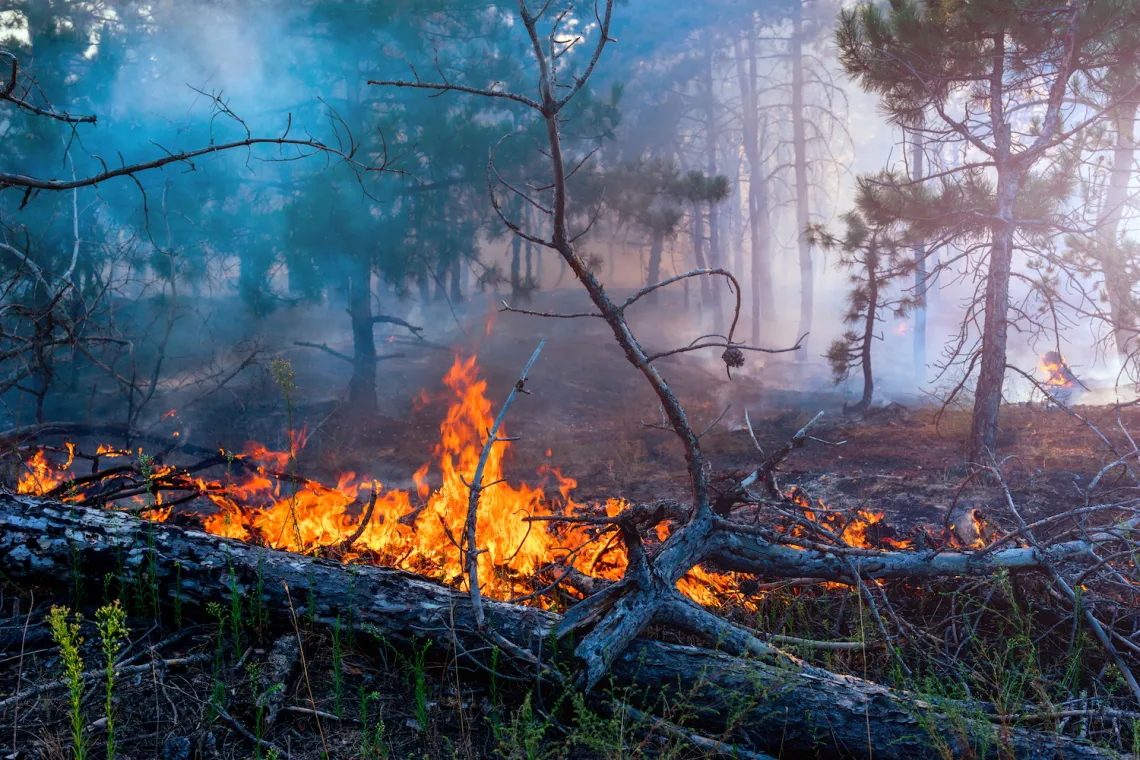
As climate change continues to have an impact on the ecology of landscapes across the world, wildfires in the state of Arizona have become more frequent and more intense over time. As monsoon rains finally extinguished the 27,000-acre Burro Fire in Mount Lemmon, we asked University of Arizona fire ecologist Donald Falk to drive with us up the mountain and tell us some things we might not know about wildfire.
If it’s built up enough energy, wildfire can “jump” across asphalt roads. This behavior is called spotting. To avoid it, fire crews do something called back burning.
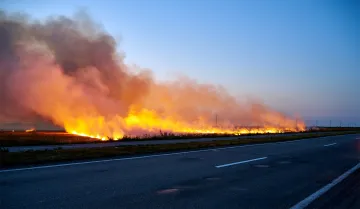
When it comes to wildfire, fuel includes any combustible material in its path, whether it be saplings, grassy fields, or homes. The more fuel a fire has, the more energy it creates. A high energy fire can do something called “spotting,” where wind, either arising from weather or generated by the fire itself, blows embers onto unburned fuels beyond the main fire. If a fire has had time to burn—and create energy—for acres and acres before it reaches a road, spotting might cause fire to cross roads, river, streams, and even lakes. In order to prevent this from happening, fire crew back burn. This means they start small fires along a natural or manmade firebreak—such as an asphalt road—to deprive the wildfire of fuel. Basically, they meet the wildfire where it’s at with a controlled fire. Under extreme heat, dryness, or wind conditions, it often proves nearly impossible to prevent spotting. Only a change in weather can slow or stop fire spread and allow firefighters to work safely and effectively.
Fire retardants don’t get dropped on fires.
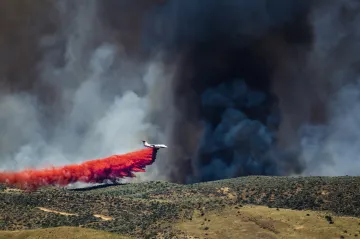
In order to burn, a wildfire needs oxygen, heat, and fuel in the form of things like pine needles, tree branches, and grasses. As wildlife burned across tens of thousands of acres of land in the hills near Santa Clarita, California last summer, photos showed airplanes dropping bright red retardants on unburned ridges. In fact, this is always the case with retardants used to control wildfire. After anticipating the direction it’s headed, fire departments drop retardants ahead of the wildfire instead of on top of it. This coats potential “fuel” with chemicals that make it harder to keep burning. Their goal is not to extinguish an existing fire, but to buy themselves time by slowing the rate of fire spread. Retardants do not put out a fire and, because they are very expensive, firefighters use them only where they will be most effective.
Fire retardants can’t be used in close vicinity to streams and lakes.
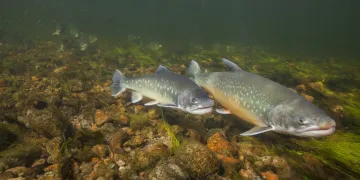
Fire retardants are made of primarily water, ammonia phosphate, sulfate ions, and some iron oxide for color. It’s non-toxic to human skin but can be harmful if swallowed by wildlife. Fire retardants are particularly bad for fish due to their high concentrations of nitrogen. Enough fire retardant could wipe out fish and amphibian populations in an entire body of water, so fire departments avoid use in these areas.
Thanks to the physics of combustion, fire wants to move uphill.
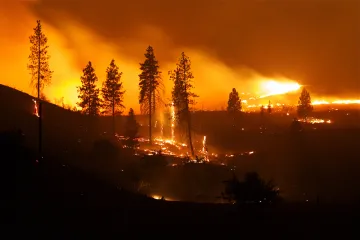
Hot air rises, because it’s less dense than cooler air. That’s why the top rack in the oven will bake food faster than the bottom rack, and why the second story of a home is warmer than the first story. In the case of a fire, the heat energy created by hot gas warms the air around it, which lowers the density of the flame. Then the flame travels upward. Fire prefers to move uphill because it burns faster in this direction. Radiation from the flames, which burn upward, can reach the unburned fuel ahead of them and heat them up so they are consumed even more rapidly by the time they’re reached. For every ten degrees of slope, a fire can double its speed this way.
In nature, fire isn’t inherently good or bad—it just is. Lots of species of plants and animals thrive in and even prefer a post-fire landscape. They’re called post-fire specialists.

Among both plants and animals, many species become even more abundant after a wildfire. For these species, the lack of competition represents an opportunity to thrive. One such example on Tucson’s own Mount Lemmon is the New Mexico locust (Robinia neomexicana), a shrub or small tree in the pea family. Although it’s present in the forest on Mount Lemmon before fire, it can become the dominant vegetation in some areas after a fire. Additionally, many insectivores, such as woodpeckers, thrive in a post-fire landscape.
Despite its heat and dryness, the Sonoran desert hasn’t really adapted well to fire.
One of the most important ingredients for a sustained wildfire is fuel. Fast-drying fuels that are relatively small in size, ignite readily, and are rapidly consumed by fire are called “fine fuels.” These include things like grasses, small twigs, and pine needles. Fine fuels allow fires to start and to spread. Places like Arizona’s Ponderosa Pine forests are rich in fine fuels, but the Sonoran desert has not experienced a lot of fire primarily due to its lack of fine fuels. Because the Sonoran Desert evolved without fire as part of its history, most of its plants are not readily adapted to withstand fire. This has become problematic as invasive species such as buffelgrass (Cenchrus ciliaris) have moved in and overtaken parts of the landscape. As a drought-tolerant perennial, buffelgrass remains dense and spreads during dry periods. Buffelgrass is an ideal fine fuel for a wildfire, and a buffelgrass fire can kill almost all native plants surrounding it, as these are not prepared for fire.

